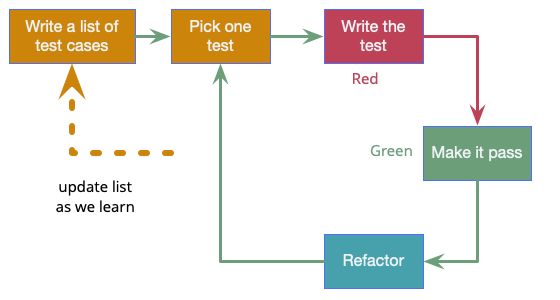In the rapidly advancing landscape of AI technology and innovation, LimeWire emerges as a unique platform in the realm of generative AI tools. This platform not only stands out from the multitude of existing AI tools but also brings a fresh approach to content generation. LimeWire not only empowers users to create AI content but also provides creators with creative ways to share and monetize their creations.
As we explore LimeWire, our aim is to uncover its features, benefits for creators, and the exciting possibilities it offers for AI content generation. This platform presents an opportunity for users to harness the power of AI in image creation, all while enjoying the advantages of a free and accessible service.
Let’s unravel the distinctive features that set LimeWire apart in the dynamic landscape of AI-powered tools, understanding how creators can leverage its capabilities to craft unique and engaging AI-generated images.
Introduction
LimeWire, a name once associated with the notorious file-sharing tool from the 2000s, has undergone a significant transformation. The LimeWire we discuss today is not the file-sharing application of the past but has re-emerged as an entirely new entity—a cutting-edge AI content publishing platform.
This revamped LimeWire invites users to register and unleash their creativity by crafting original AI content, which can then be shared and showcased on the LimeWire Studio. Notably, even acclaimed artists and musicians, such as Deadmau5, Soulja Boy, and Sean Kingston, have embraced this platform to publish their content in the form of NFT music, videos, and images.
Beyond providing a space for content creation and sharing, LimeWire introduces monetization models to empower users to earn revenue from their creations. This includes avenues such as earning ad revenue and participating in the burgeoning market of Non-Fungible Tokens (NFTs). As we delve further, we’ll explore these monetization strategies in more detail to provide a comprehensive understanding of LimeWire’s innovative approach to content creation and distribution.
LimeWire Studio welcomes content creators into its fold, providing a space to craft personalized AI-focused content for sharing with fans and followers. Within this creative hub, every piece of content generated becomes not just a creation but a unique asset—ownable and tradable. Fans have the opportunity to subscribe to creators’ pages, immersing themselves in the creative journey and gaining ownership of digital collectibles that hold tradeable value within the LimeWire community. Notably, creators earn a 2.5% royalty each time their content is traded, adding a rewarding element to the creative process.
The platform’s flexibility is evident in its content publication options. Creators can choose to share their work freely with the public or opt for a premium subscription model, granting exclusive access to specialized content for subscribers.
As of the present moment, LimeWire focuses on AI Image Generation, offering a spectrum of creative possibilities to its user base. The platform, however, has ambitious plans on the horizon, aiming to broaden its offerings by introducing AI music and video generation tools in the near future. This strategic expansion promises creators even more avenues for expression and engagement with their audience, positioning LimeWire Studio as a dynamic and evolving platform within the realm of AI-powered content creation.
AI Image Generation Tools
The LimeWire AI image generation tool presents a versatile platform for both the creation and editing of images. Supporting advanced models such as Stable Diffusion 2.1, Stable Diffusion XL, and DALL-E 2, LimeWire offers a sophisticated toolkit for users to delve into the realm of generative AI art.
Much like other tools in the generative AI landscape, LimeWire provides a range of options catering to various levels of complexity in image creation. Users can initiate the creative process with prompts as simple as a few words or opt for more intricate instructions, tailoring the output to their artistic vision.
What sets LimeWire apart is its seamless integration of different AI models and design styles. Users have the flexibility to effortlessly switch between various AI models, exploring diverse design styles such as cinematic, digital art, pixel art, anime, analog film, and more. Each style imparts a distinctive visual identity to the generated AI art, enabling users to explore a broad spectrum of creative possibilities.
The platform also offers additional features, including samplers, allowing users to fine-tune the quality and detail levels of their creations. Customization options and prompt guidance further enhance the user experience, providing a user-friendly interface for both novice and experienced creators.
Excitingly, LimeWire is actively developing its proprietary AI model, signaling ongoing innovation and enhancements to its image generation capabilities. This upcoming addition holds the promise of further expanding the creative horizons for LimeWire users, making it an evolving and dynamic platform within the landscape of AI-driven art and image creation.
Sign Up Now To Get Free Credits
Automatically Mint Your Content As NFTs
Upon completing your creative endeavor on LimeWire, the platform allows you the option to publish your content. An intriguing feature follows this step: LimeWire automates the process of minting your creation as a Non-Fungible Token (NFT), utilizing either the Polygon or Algorand blockchain. This transformative step imbues your artwork with a unique digital signature, securing its authenticity and ownership in the decentralized realm.
Creators on LimeWire hold the power to decide the accessibility of their NFT creations. By opting for a public release, the content becomes discoverable by anyone, fostering a space for engagement and interaction. Furthermore, this choice opens the avenue for enthusiasts to trade the NFTs, adding a layer of community involvement to the artistic journey.
Alternatively, LimeWire acknowledges the importance of exclusivity. Creators can choose to share their posts exclusively with their premium subscribers. In doing so, the content remains a special offering solely for dedicated fans, creating an intimate and personalized experience within the LimeWire community. This flexibility in sharing options emphasizes LimeWire’s commitment to empowering creators with choices in how they connect with their audience and distribute their digital creations.
After creating your content, you can choose to publish the content. It will automatically mint your creation as an NFT on the Polygon or Algorand blockchain. You can also choose whether to make it public or subscriber-only.
If you make it public, anyone can discover your content and even trade the NFTs. If you choose to share the post only with your premium subscribers, it will be exclusive only to your fans.
Earn Revenue From Your Content
Additionally, you can earn ad revenue from your content creations as well.
When you publish content on LimeWire, you will receive 70% of all ad revenue from other users who view your images, music, and videos on the platform.
This revenue model will be much more beneficial to designers. You can experiment with the AI image and content generation tools and share your creations while earning a small income on the side.
LMWR Tokens
The revenue you earn from your creations will come in the form of LMWR tokens, LimeWire’s own cryptocurrency.
Your earnings will be paid every month in LMWR, which you can then trade on many popular crypto exchange platforms like Kraken, ByBit, and UniSwap.
You can also use your LMWR tokens to pay for prompts when using LimeWire generative AI tools.
Pricing Plans
You can sign up to LimeWire to use its AI tools for free. You will receive 10 credits to use and generate up to 20 AI images per day. You will also receive 50% of the ad revenue share. However, you will get more benefits with premium plans.
For $9.99 per month, you will get 1,000 credits per month, up to 2 ,000 image generations, early access to new AI models, and 50% ad revenue share
For $29 per month, you will get 3750 credits per month, up to 7500 image generations, early access to new AI models, and 60% ad revenue share
For $49 per month, you will get 5,000 credits per month, up to 10,000 image generations, early access to new AI models, and 70% ad revenue share
For $99 per month, you will get 11,250 credits per month, up to 2 2,500 image generations, early access to new AI models, and 70% ad revenue share
With all premium plans, you will receive a Pro profile badge, full creation history, faster image generation, and no ads.
Sign Up Now To Get Free Credits
Conclusion
In conclusion, LimeWire emerges as a democratizing force in the creative landscape, providing an inclusive platform where anyone can unleash their artistic potential and effortlessly share their work. With the integration of AI, LimeWire eliminates traditional barriers, empowering designers, musicians, and artists to publish their creations and earn revenue with just a few clicks.
The ongoing commitment of LimeWire to innovation is evident in its plans to enhance generative AI tools with new features and models. The upcoming expansion to include music and video generation tools holds the promise of unlocking even more possibilities for creators. It sparks anticipation about the diverse and innovative ways in which artists will leverage these tools to produce and publish their own unique creations.
For those eager to explore, LimeWire’s AI tools are readily accessible for free, providing an opportunity to experiment and delve into the world of generative art. As LimeWire continues to evolve, creators are encouraged to stay tuned for the launch of its forthcoming AI music and video generation tools, promising a future brimming with creative potential and endless artistic exploration





















.webp)




